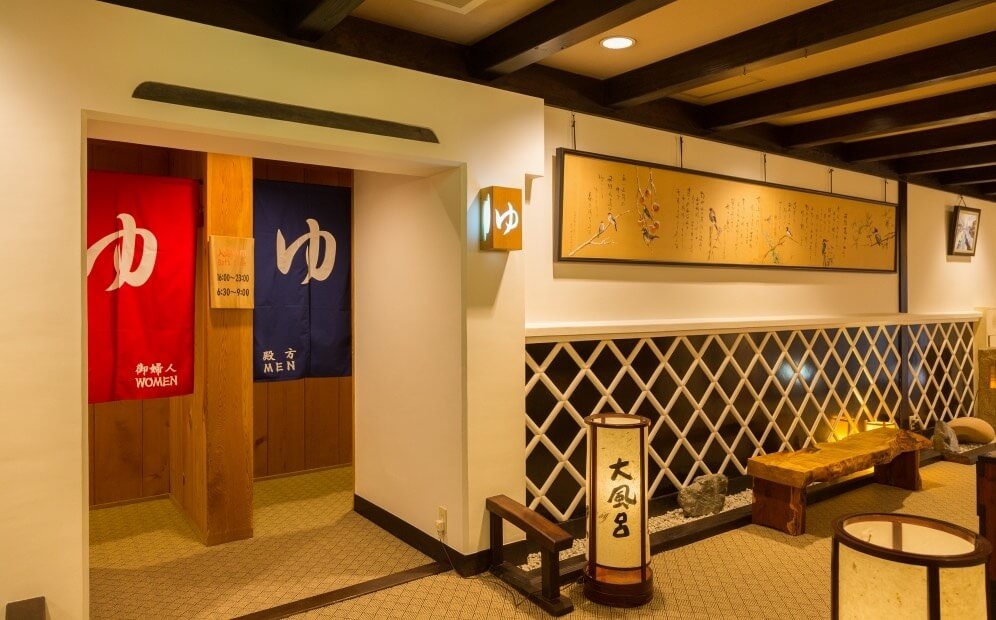Looking forward to visiting an onsen for the first time? Wondering how it works? Read on to learn about the good manners, or “onsen etiquette”. Don’t be intimidated – most rules are common sense and ensure that the bath is as clean and relaxing as possible for everyone.
Top 5 rules for bathing in an onsen hot spring
1. Leave your swimming suit… in the changing room
Everyone, including yourself, will bath naked. Most onsens offer gender-separated baths and don’t allow swimming suits. Look out for the red and blue curtains to enter the correct bathing area – the red curtains with the character 女 is for ladies only! You will have to leave your clothing in lockers or baskets provided in the changing rooms (the shoes are usually left at the entrance in lockers or shoe racks). Some mixed-gender baths allow swimsuits or towels for ladies – especially for the outdoors baths which cannot be gender-segregated. So best to ask beforehand, or just look around and do as everyone else does. Don’t be shy, everyone is naked and used to it, they will not pay any attention to you 🙂

2. Always wash before entering the bath.
Most places will have an area with small stools to sit on and shower. In very simple or traditional baths, you’ll need to crouch by the edge of the bath and scoop bathwater to rinse yourself – but be careful to not splash water into the bath. Don’t forget to rinse the little stool at the end!
3. Use soap and a small towel.
You can bring a little face towel and use it for modesty when walking around, but never let it touch the bath water. You will see many people putting their towel on their head while bathing, but setting it on the side of the bath is fine as well. Most simple onsen expect you to bring your own soap and towel, and offer purchase or rental if you don’t have your own. However at some higher-end places, all towels, soap, shampoos, and other toiletries are included in the entry fee.
4. Don’t jump into the water or swim.
The bath is for quiet soaking, conversation and contemplation. Don’t put your head under water and also make sure your hair does not touch the water (if you have long hair, bring a hairband).
5. No tattoos 🙁
Tattoos have traditionally been associated with the yakuza (organized crime syndicates), who used to meet in public bathhouses where no weapons could be concealed. To this day, excluding tattoo-clad visitors purportedly keeps the dangerous elements out. If you are not Japanese and have tattoos, you may not be allowed to bathe in a public onsen, but if they are small, you may be able to cover them with a waterproof patch. If this is not possible, in many establishments you can reserve a private bath… which is even more relaxing!
How to find the best onsen bathhouses while travelling?

You can of course search on various websites and blogs, or browse through our selection. For the best way to find onsen while on the road, download the Michi Japan app. It lists over 4600 onsen in the whole of Japan, ranging from local bathhouses to luxurious spa experiences, and also including wild hot springs. Nothing compares to hiking through a forest trail and then plunging in a naturally warm waterfall!
You will also be able to filter by type of bathhouse, price etc. To read more about the different types of onsen, check out our onsen guide.